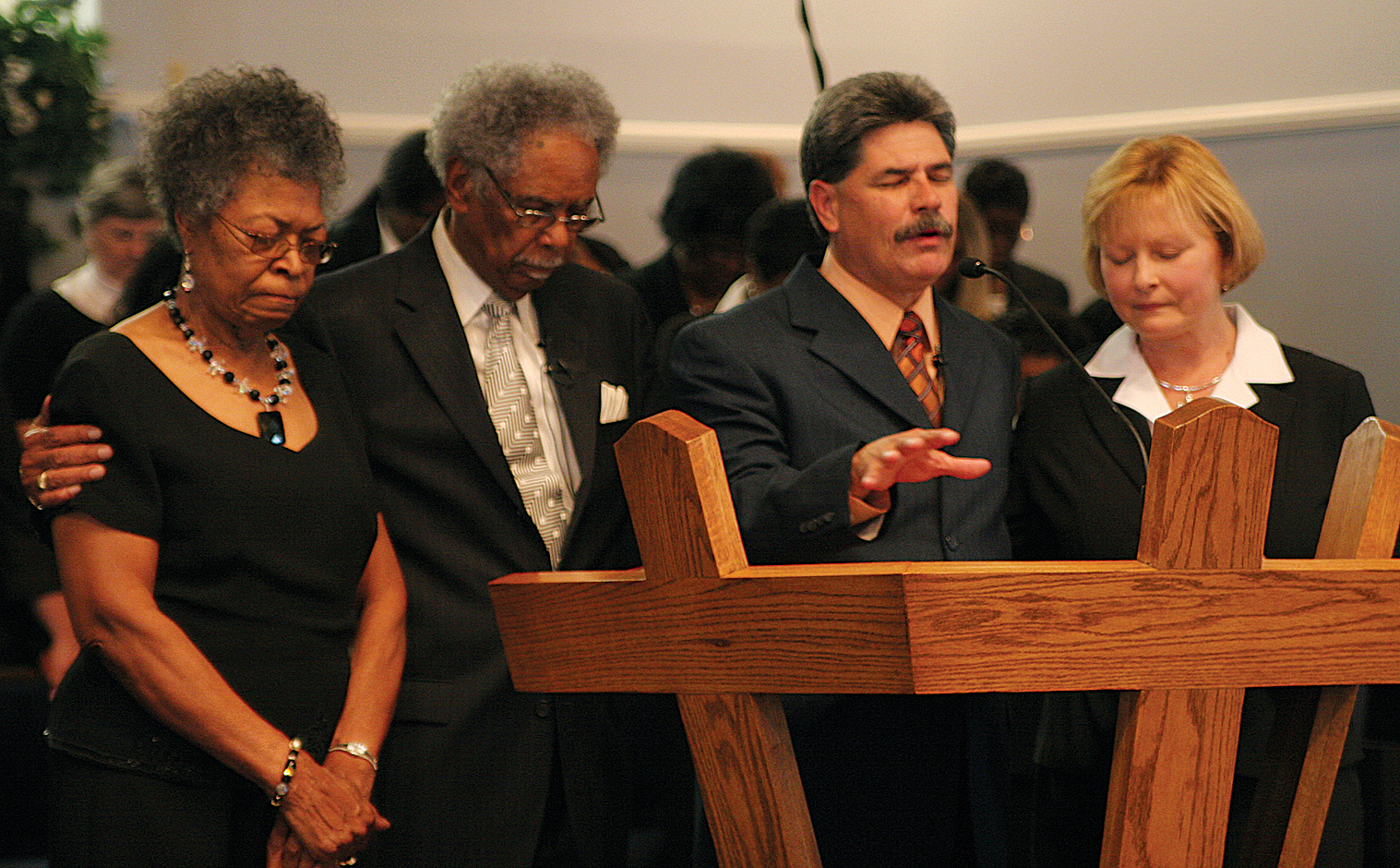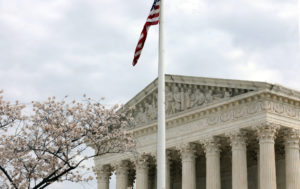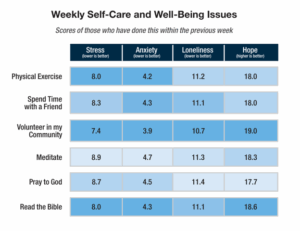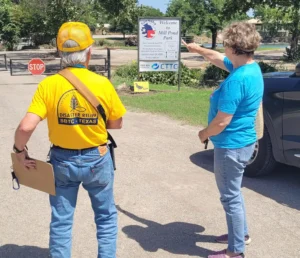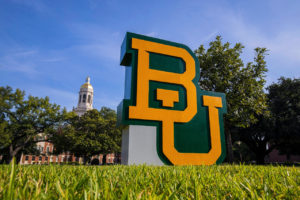
LOUISVILLE, Ky. (BP)–Several questions remain after long talks, compromises and at least one blunt sermon prior to the merger of a black church and a white church in Louisville.
But both pastors say they have the Holy Spirit and a spirit of cooperation to succeed.
More than 560 people sang, prayed and rejoiced Aug. 23 as St. Paul Missionary Baptist Church, a mostly black congregation, and Shively Heights Baptist Church, a mostly white congregation, merged into St. Paul Baptist Church at Shively Heights.
Denominational leaders praised the union as a model for racial reconciliation.
“Today is a great example of the Gospel at work changing lives, congregations and communities, with impact extending far beyond today and far beyond Louisville,” said Larry Martin, a consultant for the Kentucky Baptist Convention who has long worked with St. Paul’s pastor, Lincoln Bingham, in Christian racial reconciliation efforts.
The location of the combined churches is especially noteworthy. Years ago, Shively was a “white flight” suburb for many families leaving the city of Louisville. Just down the road from the church campus, a bomb destroyed the house of the first black family to locate in Shively 55 years ago.
Pastors at both churches say they realized their congregations were at a crossroads when they proposed combining forces.
At St. Paul Missionary Baptist Church, Bingham said facilities were limiting the ministries that members wanted to conduct.
The youth had no gym. Seniors had no elevators. The sanctuary, which seats 220 people, lacked room to grow. “Our challenge was we had ministries and membership larger than what our facilities could properly accommodate,” Bingham said.
Seven miles southwest, Shively Heights Baptist Church was facing challenges both economic and cultural, said Mark Payton, who has led the congregation for eight years.
“We had 100 people trying to raise $112,000 per year,” Payton said. “We were just getting so crunched and we just knew that we needed help to reach this community.”
Statistics compiled with the help of the Kentucky Baptist Convention reinforced the challenges and opportunities surrounding the church campus, Payton added.
Projections showed that by next year, 30 percent of the neighborhood would be African American, he said. Yet opportunities abound: Reports also noted that 300,000 people live in a five-mile radius of the church, he said, noting, “Shively Heights is sitting in the most populated area in Kentucky.”
The two pastors, who have been friends for 25 years, were talking this past winter when they realized a merger might solve their problems. The Shively Heights campus has a gym, four times as much education space as St. Paul, elevators and a sanctuary to seat 500 comfortably.
Together, Payton and Bingham emphasized the opportunities to reach the community with a witness and racial sensitivity that wasn’t possible before.
Still, both congregations had some objectors. Said Payton: “Me and Lincoln decided when we started this process we would lose some but we would gain far more.”
Bingham said two-thirds of St. Paul voted for the move. He said he maintained focus by casting the vision for what God wanted to accomplish.
“God wants us to do bigger things,” Bingham said. “We’ve had a great ministry here. But God has much more for us to do. And the facility and the racial mix [in Shively Heights] will provide even greater opportunity.”
Payton said approximately 70 percent of Shively Heights voted for the move, but less than 1 percent gave “public opposition.” Nearly 20 members have left since the vote to merge, he added. “Even in this day and age, we would be naïve to think some of it wasn’t because of race.”
Payton even addressed the racial issue in a sermon before the merger.
“I just told them, ‘You all used to live downtown. Why did you move to Shively? We all know why you moved,'” he recounted. “‘When are you going to quit running from them and start reaching them?'”
Nationally, approximately 8 percent of churches are integrated, according to George Yancey, a sociology professor at the University of North Texas who has studied race and churches.
While schooling and other aspects of life often are integrated, totally voluntary organizations like churches remain less so, Yancey said. “In America we still choose to be among our own racially,” said Yancey, author of “One Body, One Spirit.”
“Families are that way. We usually choose [to marry] someone of our own race.”
Successful integration requires sensitivity and compromise from all parties, Yancey explained. “Things are not going to be the way they used to be and both groups are going to have to accept that,” he said.
Yancey said some research suggests integrated churches are better able to grow numerically, but there has been no measurement for such things as spiritual growth or true cooperation among different ethnic groups. “There needs to be more research into that,” he said.
At St. Paul Baptist Church at Shively Heights, many details remain to be worked out. Bingham and Payton are taking turns preaching on Sunday morning. All current staff is remaining. Bingham said leaders are working to maintain a diversity of cultures in all aspects.
“It will take some time to do this, but we’ll do everything we can possibly do to make sure that equity is demonstrated in music, preaching and every other part of our worship,” Bingham said.
Payton agreed: “We are merging all of our teams to make sure we have adequate representation from both churches. We just want to make sure we don’t have all black talking in one area and all white talking in another area. We want it totally blended.”
Payton said he’s asked members to be patient as leaders “nail down the wrinkles.”
“We’re all going to be stretched,” he said. “I’ve reminded them of Joshua as he led the children of Israel. He said, ‘We’ve never been this way before,’ and neither of our churches have been this way before.”
Bingham said he hopes other congregations will learn from the merger that “we all should follow the biblical mandate that we all be one, and that it does not necessarily suggest disaster when we obey that command.”
–30–
David Winfrey is a freelance writer in Louisville, Ky. This article first appeared in the Western Recorder (www.westernrecorder.org), newsjournal of the Kentucky Baptist Convention.
